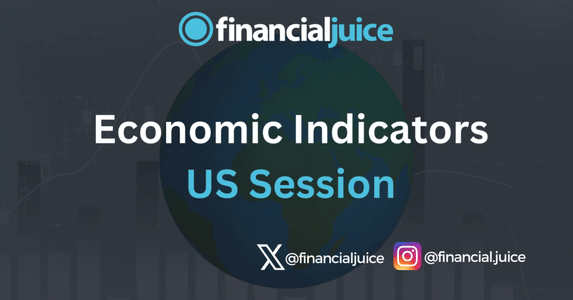
Week Ahead: Economic Indicators (US)
For the November 25th week, here is a list of the major economic indicators released during the US Session.
Tuesday 26th November
10:00 ET
US New Home Sales for October
US New Home Sales measures the annualized number of newly constructed single-family homes sold in a given month.
Released by the Census Bureau, it’s an important indicator of housing demand and economic health.
Rising new home sales suggest strong consumer confidence and economic growth, while a decline may signal economic slowdown or tighter lending conditions.
This data influences markets and provides insights into trends in the housing and construction sectors.
What to Expect
This data is unlikely to cause a market reaction.
Having said that, if New Home Sales are higher than expected, we would expect to see strength across the US assets (US stocks, dollar, and bond yields), as it would show signs of resilient housing demand, and therefore a strong consumer, which bolsters bets on strong economic growth.
If it were to come in lower than expected, we would expect weakness across the US assets.
US CB Consumer Confidence for November
The US Conference Board Consumer Confidence Index measures American consumers’ optimism or pessimism regarding the economy, based on their current financial conditions and expectations for the future.
Published monthly, it reflects consumer sentiment on income, employment, and spending.
Higher confidence suggests increased consumer spending, which drives economic growth, while lower confidence can signal potential economic downturns.
The index influences markets, as consumer confidence is a strong indicator of economic health and consumer-driven economic activity.
What to Expect
If Consumer Confidence comes in higher than expected, we would expect to see strength across the US assets (US stocks, dollar, and bond yields), as it would show signs of a resilient consumer, which bolsters bets on strong economic growth.
If it were to come in lower than expected, we would expect weakness across the US assets.
This report also features year-ahead inflation expectations, which can potentially make modest changes to US interest rate futures pricing.
14:00 ET
FOMC Meeting Minutes
The Federal Open Market Committee Meeting Minutes are detailed records of the discussions held during the Federal Reserve’s policy-setting meetings.
Released three weeks after each FOMC meeting, these minutes provide insight into the committee’s views on economic conditions, inflation, employment, and interest rates.
Investors and analysts study the minutes closely for clues about the Fed’s future monetary policy decisions, as they reveal members’ opinions and any potential shifts in policy stance.
What to Expect
If the comments from the meeting minutes underline a more hawkish view from Fed officials (underlining an unwillingness to cut rates, and/or reduced confidence in inflation’s sustainable return to target), we would expect to see weakness in US stocks, and strength in the US dollar and bond yields, as traders reduce their bets on Rate Cuts from the Fed.
If the comments are more dovish (underlining a willingness to continue with interest rate reductions, and/or satisfaction with employment and inflation levels), we would expect to see strength in US stocks and weakness in the dollar and bond yields, as traders would bolster bets on further Fed rate cuts.
Wednesday 27th November
08:30 ET
US GDP Q3 2nd Estimate
US Gross Domestic Product represents the total monetary value of all goods and services produced within the United States over a specific period, usually reported quarterly and annually.
It’s the primary measure of economic activity and health, indicating whether the economy is growing or contracting.
Positive GDP growth signals economic expansion, while negative growth can indicate a recession.
Components of GDP include consumer spending, business investment, government spending, and net exports.
What to Expect
If GDP comes in stronger than expected, we would expect to see strength across the US assets (dollar, bonds, and US stocks), as the markets are encouraged by signals of strong US economic growth, despite tight financial conditions and political uncertainty, as this would likely have positive impacts on domestic and foreign investment in US-backed assets (US bonds and the dollar) and potential underscore an increase in corporate profits.
If GDP comes in weaker than expected, we would expect the opposite.
US Durable Goods October Prelim
The US Durable Goods details new orders, shipments, and inventories for products expected to last three years or more, such as machinery, vehicles, and appliances.
Released monthly by the Census Bureau, it’s an important economic indicator as it reflects consumer and business confidence; an increase in orders suggests optimism and investment in long-lasting goods.
It provides insights into manufacturing strength, potential supply chain issues, and economic trends heading into the year’s end.
What to Expect
If Durable Goods comes in higher than expected, we would expect to see strength across the US assets (US stocks, dollar, and bond yields), as it would show signs of a strong demand for manufactured goods, and a resilient consumer, which bolsters bets on strong economic growth.
If it were to come in lower than expected, we would expect weakness across the US assets.
US Weekly Initial & Continued Jobless Claims
Initial Jobless Claims measure the number of people filing for unemployment benefits for the first time in a given week. This provides an early indication of the health of the labor market and can signal changes in economic conditions.
Continued Jobless Claims represent the number of people who continue to receive unemployment benefits after their initial claim, reflecting longer-term unemployment trends.
A rising number of claims may indicate a weakening labor market, while a decline suggests improving conditions. These metrics are important for assessing the overall state of the economy and guiding monetary policy decisions.
What to Expect
A higher jobless claims number, indicating higher unemployment, would be likely to cause weakness across the US assets (dollar, stocks, and yields), as it feeds into the narrative of a hard landing/broader economic slowdown for the US economy as we come out of the tightening cycle.
A lower jobless claims number, indicating lower unemployment, would be likely to cause strength across the US assets, as it reassures the markets that the US economy may be able to exit the tightening cycle and enter the easing cycle without a recession/broader economic slowdown.
10:00 ET
US PCE Price Index for October
The US PCE (Personal Consumption Expenditures) Price Index is a key measure of inflation released monthly by the Bureau of Economic Analysis (BEA).
It reflects the changes in the prices of goods and services consumed by households.
Unlike the CPI, which measures out-of-pocket expenses, the PCE Price Index also accounts for changes in consumer behavior and covers a broader range of expenditures.
The Federal Reserve closely monitors the PCE Price Index, especially the “core” version that excludes food and energy, to assess inflation trends and guide monetary policy decisions.
What to Expect
Higher than expected inflation numbers in this report would likely cause weakness in US stocks, and strength in the dollar and government bond yields, as it feeds into the higher for longer rate narrative, which could reduce the chances or the size of an interest rate cut at the next meeting.
Lower than expected numbers would likely do the opposite, strengthen US stocks and weaken the dollar and government bond yields, as traders solidify/increase bets on rate cuts from the Fed this year.
Keep in mind that markets have to balance between the effects of monetary policy and the state of the broader economy at this current stage in the economic cycle, which could cause some volatility/unpredictability to the market reaction.
US Consumer Spending for October
US Consumer Spending refers to the total amount of money spent by individuals and households on goods and services.
It is a key driver of the US economy, making up about two-thirds of GDP.
Changes in consumer spending provide insights into economic growth, as higher spending typically indicates a strong economy, while lower spending may signal a slowdown.
The data is closely watched to gauge consumer confidence and overall economic activity.
What to Expect
Due to Consumer Spending’s contribution to GDP, this release could draw investor attention, with growth and recession fears in focus as the Fed ends it’s tightening cycle.
A higher-than-expected consumer spending number could contribute to higher GDP, which would be likely to cause strength across the US assets, as it solidifies that a recession is not in the base case for the US economy.
The opposite could be true if it comes in lower than expected.
10:30 ET
US Weekly EIA Crude Oil Inventories
The US Weekly EIA Crude Oil Inventories report, released by the Energy Information Administration every Wednesday, provides data on the current amount of crude oil held in storage across the United States.
This report helps gauge supply and demand dynamics in the oil market and can influence oil prices and market sentiment.
What to Expect
An increase in inventories suggests lower demand or higher supply, creating a potential downside in oil prices, while a decrease indicates higher demand or lower supply, causing a possible strengthening in oil prices.





